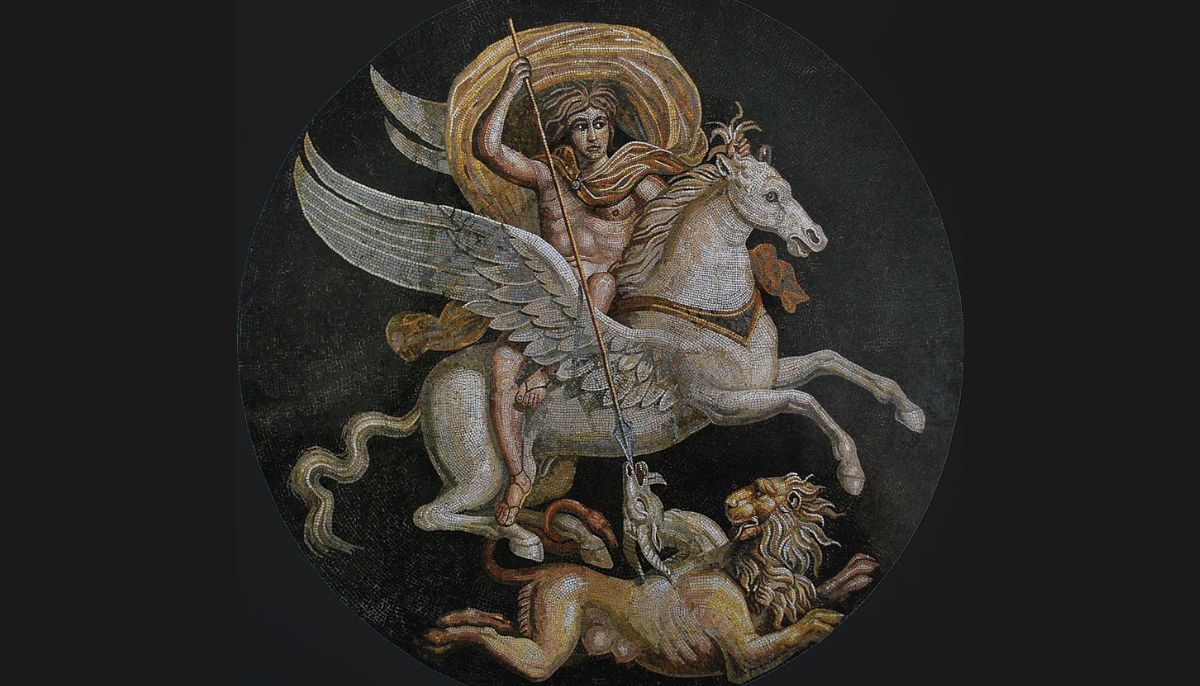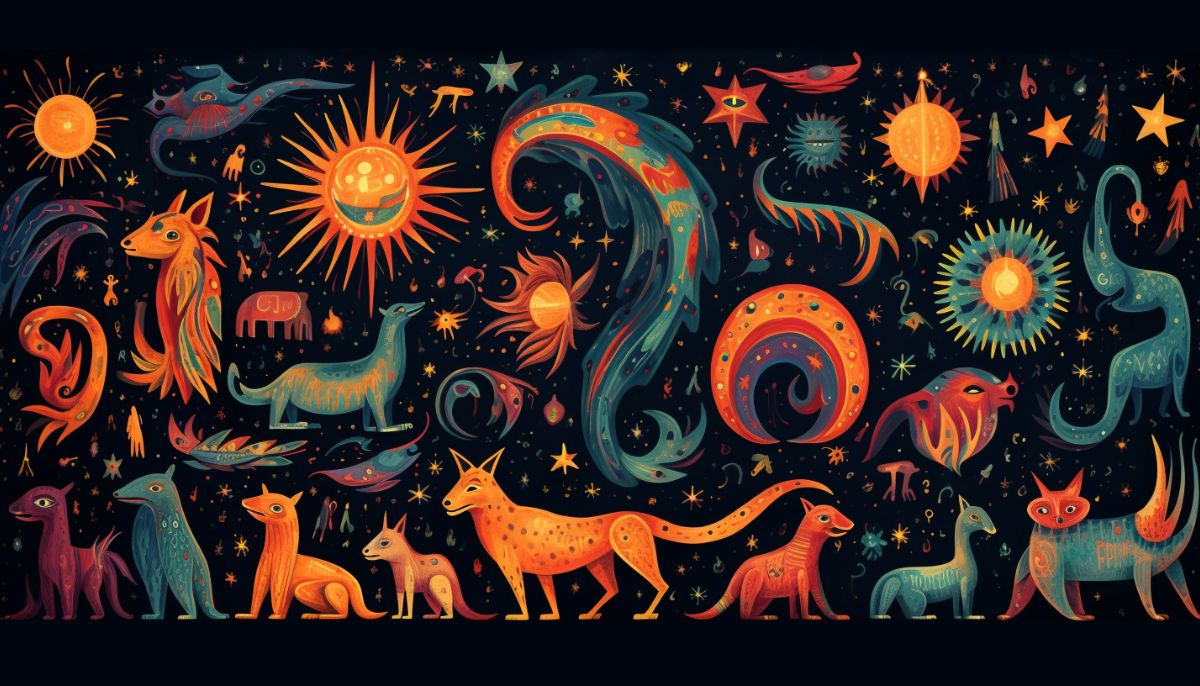In the tapestry of Greek mythology, few creatures hold a place as enchanting as Pegasus, the immortal winged horse.
Born from the blood of the beheaded Gorgon Medusa, this magnificent steed would become a central figure in the tales of heroes and gods.
Join us as we explore Pegasus’s origins, adventures, and celestial legacy.
Birth of Pegasus
The tale of Pegasus begins with Perseus’s striking of Medusa’s head. From her lifeless form emerged Chrysaor and Pegasus, the latter earning its name from the very springs where it took its first steps.
This divine creature would become the thunderbolt-bearer of Zeus himself, etching its mark in the annals of Greek mythology.
Family Ties: Medousa, Poseidon, and the Birth of Legends
Pegasus’ lineage is steeped in divine parentage. Conceived from the union of Medusa and Poseidon, he shared blood ties with the sea god and the fearsome Gorgon.
This ancestry would shape the destiny of Pegasus, leading him to the heights of Mount Olympus.
what did Pegasus look like?

Pegasus was described as an extraordinary winged horse of unparalleled beauty and grace. According to classical sources, Pegasus possessed the following characteristics:
- Wings: His magnificent wings, which sprouted from his back, distinguished Pegasus. These wings were often depicted as large and powerful, enabling him to take flight easily.
- Sleek Coat: His coat was typically described as a pristine white, though some accounts mention variations in coloration. The white coat symbolized purity and magnificence.
- Ethereal Beauty: Pegasus was renowned not only for his wings but also for his overall aesthetic. He was often portrayed as a creature of exceptional elegance and proportion.
- Muscular Build: As a divine and immortal being, Pegasus was characterized by his strong and athletic physique. This muscular build allowed him to carry great weights and soar through the heavens.
- Expressive Eyes: While specifics about Pegasus’s eyes vary in different accounts, they are often described as expressive, reflecting the intelligence and spirit of this extraordinary creature.
- Graceful Movement: When depicted in art or described in literature, Pegasus is often shown in mid-flight, evoking a sense of fluidity and grace in his movements.
- Long, Flowing Mane: Pegasus’s mane, like that of many horses in Greek mythology, was often depicted as long and flowing, adding to his majestic appearance.
- Divine Aura: Being immortal, Pegasus was imbued with aura of divinity and otherworldly radiance.
Remember, artistic interpretations of Pegasus may vary, and different depictions may emphasize certain features over others. However, the above characteristics form the core imagery of this iconic winged horse in Greek mythology.
the mythology of pegasus
Pegasus, the immortal winged horse of Greek mythology, is prominent in the rich tapestry of ancient tales. This majestic creature is steeped in symbolic significance and has captivated people’s imaginations across cultures for centuries.
Pegasus and Bellerophon
One of the most famous stories involving Pegasus centers around Bellerophon, a mortal hero. Athena, the goddess of wisdom and warfare, gifted Bellerophon a magical bridle that allowed him to tame Pegasus.
Together, they embarked on various heroic quests, including the slaying of the fire-breathing monster known as the Chimera. Their collaboration and triumphs established Bellerophon and Pegasus as legendary figures in Greek mythology.
Pegasus and the Divine
In some accounts, Pegasus is linked directly to the gods. He is described as the thundering horse of Zeus, symbolizing the raw power of the king of the gods. This association elevates Pegasus to a position of celestial importance, as he served as the bearer of Zeus’s thunderbolts.
Furthermore, there is an alternate tradition that connects Pegasus to Eos, the goddess of the dawn. According to this version, Pegasus was a gift from Eos to the Muses, emphasizing his close association with artistic inspiration and creativity.
Symbolism of pegasus
Pegasus embodies several key themes and symbols in Greek mythology:
- Freedom and Aspiration: Pegasus’s wings represent freedom and pursuing higher aspirations. His ability to soar above earthly confines signifies the human desire to transcend limitations and reach greater heights.
- Divine Connection: As the offspring of Medusa and Poseidon, or, in some accounts, Poseidon alone, Pegasus bridges the mortal and divine realms. This duality illustrates the interplay between the mortal and immortal aspects of existence.
- Inspiration and Creativity: Pegasus is intimately connected with the Muses, acting as a conduit for artistic inspiration. His hoof is said to have brought forth the Hippocrene, a sacred spring on Mount Helikon, associated with poetic inspiration.
- Power and Heroism: Pegasus’s role in Bellerophon’s heroic exploits showcases the horse’s extraordinary power and willingness to assist mortals in their quests for valor and triumph over adversity.
- Transformation: Pegasus’s miraculous birth from the severed neck of Medusa underscores themes of transformation and the emergence of unexpected beauty from the depths of chaos and destruction.
- Heavenly Constellation: Pegasus’s placement among the stars in Greek mythology solidifies his status as a celestial being, marking the arrival of spring and thunderstorms.
Similar Creatures in Greek Mythology
While Pegasus is one of Greek mythology’s most renowned creatures, it’s just the tip of the iceberg in a world brimming with fantastical beings.
The Chimera, with its lion’s body, goat’s head, and serpent’s tail, symbolizes the untamed forces of nature. Cerberus, the three-headed guardian of the Underworld, embodies the mysteries of life and death.
Griffins, majestic amalgamations of lion and eagle, guard treasures and signify strength.
The Sphinx adds an air of mystery with its riddles and enigmatic nature.
Centaurs, half-human and half-horse, represent a fusion of civilization and wildness.
Together, these creatures enrich Greek mythology, showcasing the boundless imagination of ancient storytellers and leaving a legacy of fascination and inspiration for generations to come.
Want to know more about the creatures and monsters of Greek Mythology?

Explore more articles like this in our broader series on Greek monsters. To delve even deeper into the world of mythical creatures, be sure to check out our comprehensive hub article on the monsters of Greek mythology.






